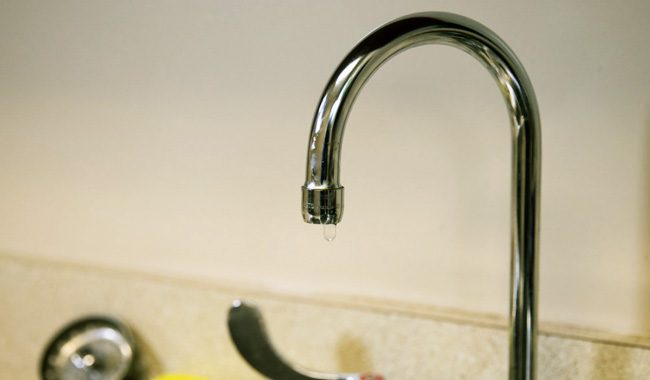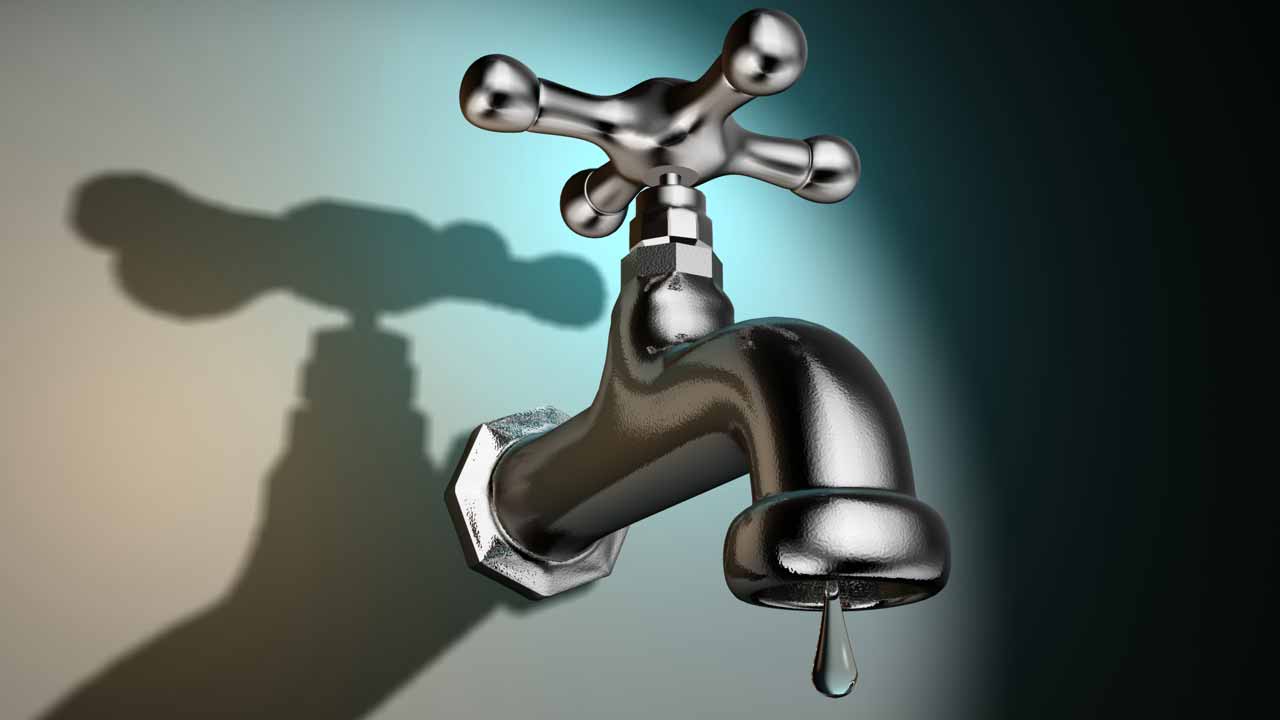Uncovering the Effect of a Dripping Faucet
Uncovering the Effect of a Dripping Faucet
Blog Article
Have you been hunting for tips involving The Environmental Impact of Leaky Faucets?

Intro
A dripping tap could seem like a minor annoyance, however its effects prolong much beyond the occasional drip. Comprehending the results of a leaking faucet is critical for both property owners and the environment. In this article, we'll discover the different effects of this typical household problem and why resolving it without delay is important.
Causes of Leaky Faucets
Leaky taps can arise from a range of aspects, including deterioration, high water stress, and corrosion. Gradually, the consistent use of faucets can cause damaged seals and gaskets, creating leaks to develop. Furthermore, extreme water stress can place pressure on plumbing components, bring about leaks. Rust and rust can also compromise faucet elements, making them prone to leakage.
Water Waste
Among one of the most substantial effects of a dripping faucet is water wastage. Even a tiny drip can amount to gallons of drainage over time. This not just increases water expenses but likewise adds to water scarcity and environmental deterioration. Attending to leaking taps promptly is essential for saving this priceless source and minimizing its influence on the planet.
Financial Impact
In addition to drainage, dripping faucets can additionally have a considerable financial effect. Raised water bills are a direct consequence of water wastefulness, costing homeowners hundreds of bucks annually. In addition, the expense of repairing water damage caused by leaks can be considerable, especially if left unattended for a prolonged period.
Environmental Effect
The environmental effect of leaking taps prolongs past water wastage. By saving water, homeowners can add to broader initiatives to reduce water shortage and safeguard natural ecosystems. Lasting options such as rainwater harvesting and water-efficient components can even more reduce the ecological footprint of house water usage.
Technological Solutions
Innovations in modern technology have caused the advancement of smart taps and water-saving gadgets that help lessen water waste. Smart taps utilize sensors to spot motion and change water flow accordingly, lowering waste without compromising comfort. Water-saving gadgets such as aerators and low-flow showerheads are additionally reliable in preserving water without endangering performance.
International Perspectives
While leaking taps might appear like a localized issue, they add to wider international challenges such as water deficiency and environment adjustment. In areas currently facing water anxiety, every decline counts, making leak avoidance and fixing essential. By taking on water-saving methods and purchasing lasting modern technologies, home owners can play their component in dealing with these pushing international issues.
Governing Procedures
Federal government laws play an important function in minimizing the impact of leaky taps and promoting water conservation. From building codes that need water-efficient components to water-saving motivations and rebates, policymakers have a series of tools at their disposal. By carrying out and enforcing these laws, governments can make sure that home owners prioritize water preservation in their daily lives.
Community Impact
Attending to leaking taps needs cumulative efforts at the neighborhood level. By elevating understanding regarding the value of water conservation and providing resources for leak detection and repair work, neighborhood authorities can encourage homeowners to act. Initiatives such as water-saving rebate programs and leakage discovery campaigns can incentivize behavior modification and advertise responsible water usage.
Case Studies
Real-life examples of the impact of dripping taps underscore the value of positive maintenance and timely fixings. From water damages to increasing water expenses, the consequences of ignoring leakages can be severe. By sharing these case studies, home owners can much better comprehend the relevance of attending to dripping faucets without delay.
Educational Campaigns
Educational campaigns play a critical duty in increasing understanding about the results of leaking faucets and advertising water conservation techniques. Through workshops, workshops, and on-line sources, property owners can learn just how to identify and fix leakages themselves. By equipping individuals with expertise and tools, educational campaigns can promote a society of accountable water use within communities.
Wellness Issues
Leaking faucets can produce conducive settings for mold and mildew and mold growth, posing wellness risks to residents. The presence of mold and mildew can exacerbate breathing concerns and allergies, particularly in vulnerable people. In addition, water damage arising from leakages can compromise the architectural stability of structures and cause expensive repair work.
DIY vs. Professional Repair work
When faced with a dripping tap, homeowners frequently debate whether to try repair services themselves or employ a specialist plumber. While DIY fixings can save money, they might not always resolve the hidden issue effectively. Expert plumbings have the knowledge and tools to diagnose and take care of leaks correctly, making certain long-term solutions and assurance for property owners.
Preventive Measures
Protecting against leaking taps calls for regular maintenance and aggressive actions. Straightforward jobs such as replacing damaged washing machines and seals can protect against leaks from establishing. In addition, updating to high-quality components and minimizing water pressure can aid prolong the lifespan of faucets and minimize the threat of leakages.
Verdict
Finally, the results of a dripping tap expand far past the periodic drip. From water wastage and increased water bills to wellness problems and ecological impact, the consequences of neglecting leaks can be considerable. By resolving dripping taps quickly and adopting water-saving techniques, home owners can minimize these effects and contribute to a much more lasting future.
Why You Shouldn’t Ignore a Leaky Faucet in Your Home
What Causes a Leaky Faucet?
Various factors can cause a leak, from loose and worn-out parts to corrosion. Your faucet has four essential components from which most plumbing issues will stem: the O-ring, the valve seat, the washer and the gasket.
What Is an O-Ring?
The O-ring is a stem screw that fastens parts of the faucet in place, preventing water from leaking out of the spout. Depending on your faucet type, the stem might have multiple O-rings. Water will drip from the faucet’s handles and base if this part breaks or deteriorates.
What Is a Valve Seat?
The valve seat controls the flow and temperature of the water. Found at the base of the handle, it works as a seal for the faucet’s stem. The valve seat ensures the water is allowed to flow or is blocked as the handles dictate. You’ll know it’s malfunctioning when water leaks from your faucet’s sides.
What Is a Gasket?
The gasket is found between the water inlet and the valve stem. It creates a seal between the faucet and the sink, holding its joints by aerators attached to the stem’s head. Water will trickle out from the base if the gasket isn’t working.
What Is a Washer?
The washer secures the handles and prevents leakage, serving a similar purpose to the O-ring. While the O-ring is ordinarily round and made from an elastic material, such as rubber, the washer is square-shaped and composed of brass, copper and other hard metals. If it malfunctions, corrodes or has been improperly installed, water will leak out of the handles, causing that incessant faucet drip.
Why Is a Leaky Faucet Dangerous?
A leaky faucet left alone for too long can have significant consequences.
Pest Infestations
Since bugs and rodents gravitate towards the scent of water, a leaky faucet will draw pests to your sink. Both are looking for leaks accessible through crawl spaces, which a faucet provides. If you leave water dripping for too long, you run the risk of an infestation.
Rust
If one of the faucet parts has started to corrode, the resulting rust can spread to your pipes and valves with startling speed. The rust might even lead to cracks or other impairments, resulting in more severe plumbing issues.
Your sink could also sustain damage from a leaky faucet. The water in your tap possesses sparse elements of calcium and iron that can stain your sink with repeated and prolonged exposure. Once those elements in the water have been open to the air for some time, your sink will start to rust, creating marks that can be difficult to remove.
https://www.tomsmechanical.com/blog/why-you-shouldnt-ignore-a-leaky-faucet-in-your-home

As a devoted person who reads on The Environmental Impact of Leaky Faucets, I assumed sharing that excerpt was a smart idea. Sharing is caring. Helping people is fun. Kudos for your time. Revisit us soon.
Report this page